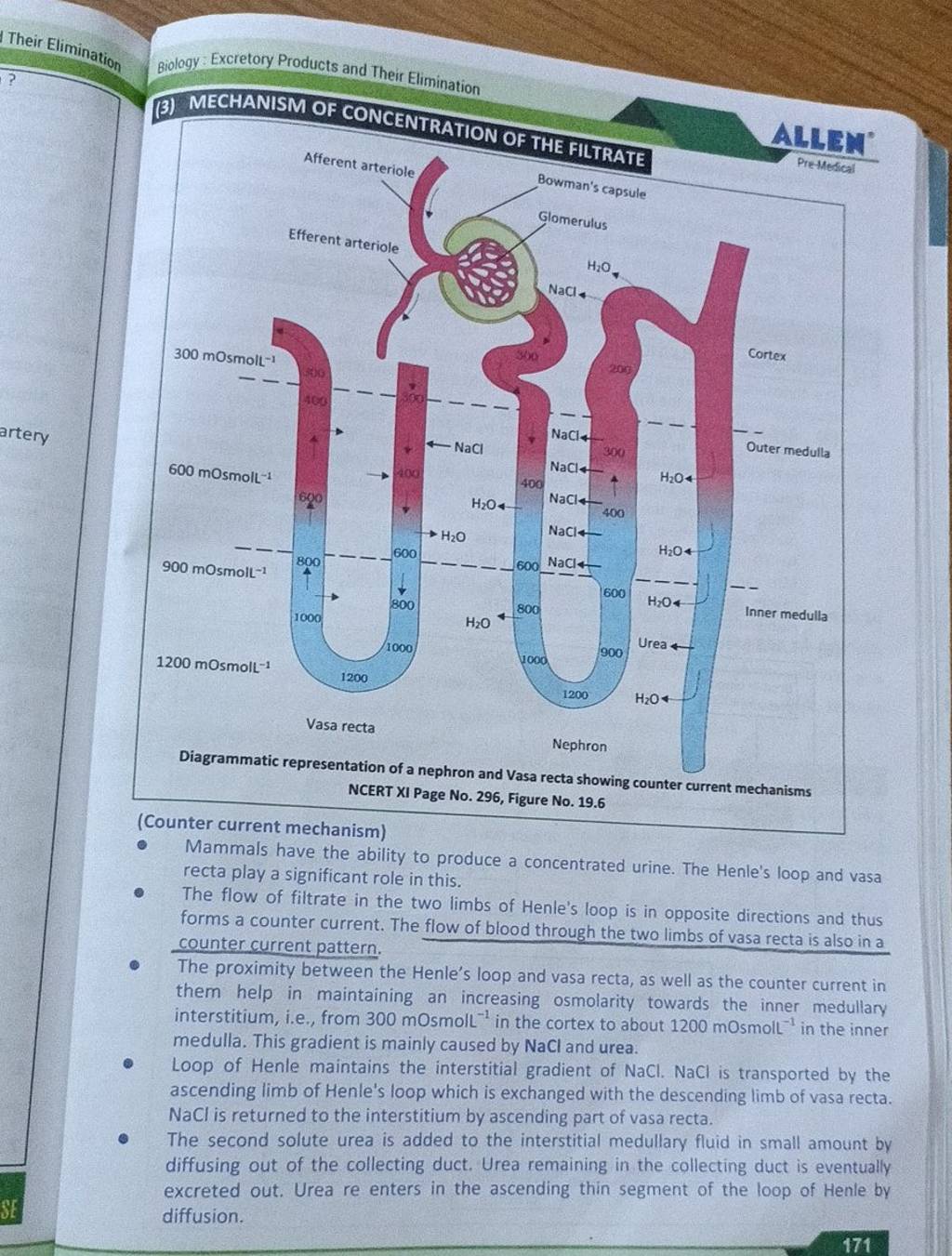Question
Question asked by Filo student

(Counter current mechanism) Mammals have the ability to produce a concentrated urine. The Henle's loop and vasa recta play a significant role in this. The flow of filtrate in the two limbs of Henle's loop is in opposite directions and thus forms a counter current. The flow of blood through the two limbs of vasa recta is also in a counter current pattern. The proximity between the Henle's loop and vasa recta, as well as the counter current in them help in maintaining an increasing osmolarity towards the inner medullary interstitium, i.e., from in the cortex to about in the inner medulla. This gradient is mainly caused by and urea. Loop of Henle maintains the interstitial gradient of . is transported by the ascending limb of Henle's loop which is exchanged with the descending limb of vasa recta. is returned to the interstitium by ascending part of vasa recta. The second solute urea is added to the interstitial medullary fluid in small amount by diffusing out of the collecting duct. Urea remaining in the collecting duct is eventually excreted out. Urea re enters in the ascending thin segment of the loop of Henle by diffusion. 171
Found 6 tutors discussing this question
Discuss this question LIVE
6 mins ago
Filo tutor solutions (2)
Learn from their 1-to-1 discussion with Filo tutors.

One destination to cover all your homework and assignment needs
Learn Practice Revision Succeed

Instant 1:1 help, 24x7
60, 000+ Expert tutors

Textbook solutions
Big idea maths, McGraw-Hill Education etc

Essay review
Get expert feedback on your essay

Schedule classes
High dosage tutoring from Dedicated 3 experts
Practice more questions on Human Physiology
Question 2
Hard
Views: 5,805
Reason: In aschelminthes, mesoderm is present as scattered pouches in between ectoderm and endoderm.
Question 4
Easy
Views: 5,696
Students who ask this question also asked
Question 1
Views: 5,141
Question 2
Views: 5,294
Question 3
Views: 5,170
Question 4
Views: 5,543


Stuck on the question or explanation?
Connect with our Biology tutors online and get step by step solution of this question.
231 students are taking LIVE classes
| Question Text | (Counter current mechanism)
Mammals have the ability to produce a concentrated urine. The Henle's loop and vasa recta play a significant role in this.
The flow of filtrate in the two limbs of Henle's loop is in opposite directions and thus forms a counter current. The flow of blood through the two limbs of vasa recta is also in a counter current pattern.
The proximity between the Henle's loop and vasa recta, as well as the counter current in them help in maintaining an increasing osmolarity towards the inner medullary interstitium, i.e., from in the cortex to about in the inner medulla. This gradient is mainly caused by and urea.
Loop of Henle maintains the interstitial gradient of . is transported by the ascending limb of Henle's loop which is exchanged with the descending limb of vasa recta. is returned to the interstitium by ascending part of vasa recta.
The second solute urea is added to the interstitial medullary fluid in small amount by diffusing out of the collecting duct. Urea remaining in the collecting duct is eventually excreted out. Urea re enters in the ascending thin segment of the loop of Henle by diffusion.
171 |
| Updated On | Nov 8, 2022 |
| Topic | Human Physiology |
| Subject | Biology |
| Class | Class 11 |
| Answer Type | Video solution: 2 |
| Upvotes | 248 |
| Avg. Video Duration | 4 min |



